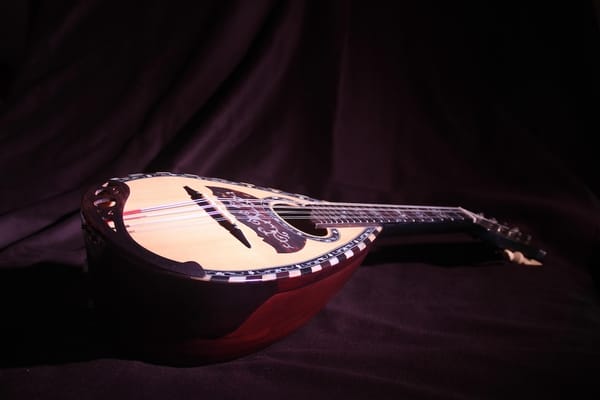Mastering Jazz Chord Progressions: A Beginner's Guide to Jazz Standards
Unlock the secrets of jazz with this beginner’s guide to chord progressions. Learn essential progressions like ii-V-I, explore their role in jazz standards, and discover tips to enhance your harmonic understanding and improvisation.

Jazz is a genre that thrives on complexity, creativity, and improvisation, and its foundation lies in chord progressions. For new learners, understanding these progressions is a vital step towards mastering jazz standards and developing musical fluency. This guide provides an in-depth exploration of essential jazz chord progressions, their functions, and practical tips to help you navigate the harmonic language of jazz with confidence.
1. Why Chord Progressions Matter in Jazz
Chord progressions are the harmonic backbone of any musical piece. In jazz, they play an even more crucial role because improvisation often revolves around navigating these harmonic changes. A strong understanding of chord progressions allows musicians to:
- Recognise patterns: Many jazz standards share common progressions, making them easier to learn and perform.
- Improvise effectively: Understanding the underlying harmony enables players to craft solos that complement the progression.
- Develop musical intuition: A solid grasp of progressions enhances your ability to predict and respond to chord changes in real time.
2. The ii-V-I Progression: The Cornerstone of Jazz Harmony
The ii-V-I progression is the most common and important chord sequence in jazz. It appears in countless standards and is considered the foundation of jazz harmony.
Breaking Down ii-V-I:
- ii chord: A minor seventh chord (e.g., Dm7 in the key of C).
- V chord: A dominant seventh chord (e.g., G7 in the key of C).
- I chord: A major seventh chord (e.g., Cmaj7 in the key of C).
This progression creates a sense of movement and resolution, with the ii chord leading to the tension of the V chord, which resolves to the stability of the I chord.
Examples in Jazz Standards:
- “Autumn Leaves”
- “All the Things You Are”
- “Fly Me to the Moon”
Practice Tips:
- Play the ii-V-I in all 12 keys to build familiarity.
- Experiment with different voicings, such as rootless chords or extensions like 9ths and 13ths, to enrich your harmonic palette.
3. The Blues Progression: A Staple in Jazz Repertoire
The 12-bar blues progression is a timeless structure found in both jazz and blues. While it has a simple framework, jazz musicians often embellish it with substitutions and extensions.
Basic 12-Bar Blues Form in C:
| C7 | F7 | C7 | C7 |
| F7 | F7 | C7 | A7 |
| D7 | G7 | C7 | G7 |
Jazz Variations:
Jazz musicians add complexity by incorporating ii-V progressions and chromatic movement:
| C7 | F7 | C7 | A7 |
| Dm7 | G7 | C7 | A7 |
| Dm7 | G7 | C7 | G7 |
Examples in Jazz Standards:
- “Now’s the Time” (Charlie Parker)
- “Straight, No Chaser” (Thelonious Monk)
- “Tenor Madness” (Sonny Rollins)
Practice Tips:
- Learn the basic 12-bar blues before exploring variations.
- Improvise over the progression using the blues scale and bebop vocabulary.
4. Turnarounds: Connecting the Dots
Turnarounds are short progressions that lead back to the beginning of a phrase or section. They often occur at the end of a chorus to create a seamless transition.
Common Turnarounds:
- I-vi-ii-V: (Cmaj7 - Am7 - Dm7 - G7)
- iii-vi-ii-V: (Em7 - A7 - Dm7 - G7)
- Chromatic Movement: (Cmaj7 - C#dim7 - Dm7 - G7)
Examples in Jazz Standards:
- “I Got Rhythm” (George Gershwin)
- “The Way You Look Tonight”
Practice Tips:
- Play turnarounds in multiple keys to improve your harmonic flexibility.
- Experiment with tritone substitutions, such as replacing G7 with Db7, to create interesting variations.
5. Modal Jazz Progressions: Breaking Free from Traditional Harmony
Modal jazz shifts the focus from complex progressions to static harmony and melodic exploration. Instead of rapidly changing chords, modal jazz often emphasises a single chord or scale for extended periods.
Key Modal Progressions:
- So What Chord Progression: Dm7 - Em7 (used in “So What” by Miles Davis).
- Impressionistic Harmony: Often based on quartal voicings (chords built in fourths).
Examples in Jazz Standards:
- “So What” (Miles Davis)
- “Maiden Voyage” (Herbie Hancock)
Practice Tips:
- Focus on developing melodic ideas over a single scale.
- Experiment with voicings that emphasise the open, spacious quality of modal harmony.
6. Rhythm Changes: A Jazz Essential
Derived from George Gershwin’s “I Got Rhythm,” rhythm changes form the basis of many jazz tunes. The progression is notable for its fast-moving harmony and cyclical structure.
Basic Rhythm Changes Progression in Bb:
| Bbmaj7 | G7 | Cm7 | F7 |
| F7 | D7 | G7 | C7 |
| F7 | Bb7 | Eb7 | A7 |
| D7 | G7 | C7 | F7 |
Examples in Jazz Standards:
- “Anthropology” (Charlie Parker)
- “Oleo” (Sonny Rollins)
- “Cotton Tail” (Duke Ellington)
Practice Tips:
- Start with the basic changes before incorporating substitutions.
- Practise improvising with bebop scales and enclosures to capture the style.
7. Understanding Substitutions and Extensions
Jazz musicians often replace standard chords with substitutes or add extensions to enrich the harmony.
Tritone Substitution:
Replacing a dominant chord with another dominant chord a tritone away.
- Example: Replace G7 with Db7 in the ii-V-I progression.
Extensions:
Adding 9ths, 11ths, and 13ths to chords for a richer sound.
- Example: G7 becomes G13 or G7b9.
Practice Tips:
- Familiarise yourself with the sound of common substitutions and extensions.
- Experiment with applying these techniques to jazz standards.
8. Developing Your Ear for Jazz Harmony
A strong ear is essential for understanding and applying jazz chord progressions. Ear training helps you recognise progressions by sound, enabling you to play by ear and respond in real time.
Tips for Ear Training:
- Practise identifying intervals, chords, and progressions using apps or software.
- Transcribe jazz solos to understand how musicians navigate progressions.
- Sing the bass lines of progressions to internalise harmonic movement.
9. Applying Chord Progressions to Jazz Standards
Once you’re familiar with basic progressions, apply your knowledge to learning jazz standards. Start with simpler tunes before progressing to more harmonically complex pieces.
Recommended Jazz Standards for Beginners:
- “Autumn Leaves”
- “Blue Bossa”
- “All of Me”
Tips for Learning Standards:
- Memorise the melody, chords, and form of the tune.
- Practise comping, soloing, and playing the bass line.
- Jam with others to improve your ability to apply progressions in real time.
10. Beyond the Basics: Developing Your Unique Voice
Understanding jazz chord progressions is only the beginning. As you become more comfortable with harmony, focus on developing your unique voice as a jazz musician. Experiment with original compositions, reharmonisations, and advanced techniques to create your personal approach to jazz.
Conclusion
Jazz chord progressions are the key to unlocking the beauty and complexity of the genre. By mastering fundamental progressions like ii-V-I and exploring the harmonic possibilities of jazz standards, you lay the groundwork for improvisation, creativity, and musical growth.





